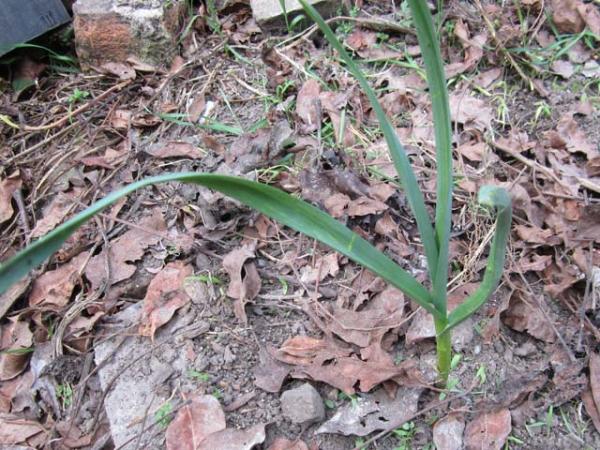Array
(
[0] => Array
(
[id] => 173
[is_published] => 1
[websiteID] => 5
[url] => /gardening/hedges.php
[page_status] => Published
[number_of_ads] => 4
[can_use_editor] => 1
[last_modified_date] => 2013-09-16 00:00:00
[last_modified_by] => Alan
[checked_for_duplicate_content] =>
[title] => Hedges
[heading] => Hedges
[meta_description] => This article explains how to care for and maintain your Australian hedge.
[article_category_1] => Gardening
[article_category_2] =>
[article_category_3] =>
[article_category_4] =>
[article_category_5] =>
[business_category_1] => Landscaper
[business_category_2] => Nursery
[business_category_3] => Garden Designer
[business_category_4] => Landscape Architect
[business_category_5] =>
[number_of_google_mrecs] => 1
[show_google_ad_bottom_of_page] => 1
[show_get_quotes_top_of_page] => 1
[show_get_quotes_rhs_of_page] => 1
[show_directory_search_widget] => 1
[show_trending_content_widget] => 1
[show_facebook_widget] => 1
[show_further_reading_section] => 1
[show_sponsors_section] => 1
[show_top_article_ad] => 1
)
[1] => Array
(
[id] => 463
[is_published] => 1
[websiteID] => 5
[url] => /gardening/plant-finder/search-results.php
[page_status] => Published
[number_of_ads] => 2
[can_use_editor] => 0
[last_modified_date] =>
[last_modified_by] => Alan
[checked_for_duplicate_content] =>
[title] => Plant search results (not used)
[heading] => Plant search results (not used)
[meta_description] => (not used)
[article_category_1] => Gardening
[article_category_2] => Landscaping
[article_category_3] =>
[article_category_4] =>
[article_category_5] =>
[business_category_1] => Landscaper
[business_category_2] => Garden Maintenance
[business_category_3] =>
[business_category_4] =>
[business_category_5] =>
[number_of_google_mrecs] => 0
[show_google_ad_bottom_of_page] => 1
[show_get_quotes_top_of_page] => 0
[show_get_quotes_rhs_of_page] => 0
[show_directory_search_widget] => 0
[show_trending_content_widget] => 0
[show_facebook_widget] => 0
[show_further_reading_section] => 0
[show_sponsors_section] => 0
[show_top_article_ad] => 0
)
[2] => Array
(
[id] => 9
[is_published] => 1
[websiteID] => 5
[url] => /landscaping/plants-for-your-garden.php
[page_status] => Published
[number_of_ads] => 2
[can_use_editor] => 1
[last_modified_date] => 2013-09-10 00:00:00
[last_modified_by] => Alan
[checked_for_duplicate_content] =>
[title] => Selecting plants for your garden
[heading] => Selecting plants for your garden
[meta_description] => This article describes how you can best select plants for your garden.
[article_category_1] => Landscaping
[article_category_2] =>
[article_category_3] =>
[article_category_4] =>
[article_category_5] =>
[business_category_1] => Landscaper
[business_category_2] => Nursery
[business_category_3] => Garden Designer
[business_category_4] => Landscape Architect
[business_category_5] =>
[number_of_google_mrecs] => 0
[show_google_ad_bottom_of_page] => 1
[show_get_quotes_top_of_page] => 1
[show_get_quotes_rhs_of_page] => 1
[show_directory_search_widget] => 1
[show_trending_content_widget] => 0
[show_facebook_widget] => 0
[show_further_reading_section] => 1
[show_sponsors_section] => 0
[show_top_article_ad] => 1
)
[3] => Array
(
[id] => 425
[is_published] => 1
[websiteID] => 5
[url] => /landscaping/diy-retaining-walls.php
[page_status] => Published
[number_of_ads] => 5
[can_use_editor] => 1
[last_modified_date] => 2013-09-10 00:00:00
[last_modified_by] => Alan
[checked_for_duplicate_content] =>
[title] => DIY Retaining Walls
[heading] => DIY Retaining Walls
[meta_description] => Learn about building a retaining wall for your garden. This article explains your options.
[article_category_1] => Landscaping
[article_category_2] =>
[article_category_3] =>
[article_category_4] =>
[article_category_5] =>
[business_category_1] => Landscaper
[business_category_2] => Garden Maintenance
[business_category_3] => Garden Supplies
[business_category_4] => Garden Designer
[business_category_5] => Garden Tools
[number_of_google_mrecs] =>
[show_google_ad_bottom_of_page] => 1
[show_get_quotes_top_of_page] => 1
[show_get_quotes_rhs_of_page] => 0
[show_directory_search_widget] => 1
[show_trending_content_widget] => 0
[show_facebook_widget] => 1
[show_further_reading_section] => 1
[show_sponsors_section] => 0
[show_top_article_ad] => 1
)
)
Plant description
Garlic is a bulbous plant from the onion family, and is grown for the useful and pungent bulbs which are used in the kitchen and medicinally. The flat, grey-green leaves and globe shaped flowers are also edible, though less fully flavoured than the bulbs. Garlic can also be pulled and used before the bulbs separate into cloves. There are many different cultivars of garlic.
Garlic is very easy to grow, with few pests and diseases. Winter cold is needed to start the side bulbs forming that grow and produce the cloves, so if growing in areas that don't get cold enough, you may just get one single garlic bulb. It is the increasing day length in spring that triggers the side bud shoots to enlarge. Stress from lack of water can cause abortion of the new side shoots, which will lead to disappointment at harvest time.
Propagation is from separate cloves, and these are planted just below the soil surface about 10-20cms apart, in autumn through to early winter. They can be planted in early spring as well, but autumn planting is more reliable. Time from planting to bulb harvest is around 8 months. Harvest when the tops turn brown, but before the tops have completely died away. Green garlic can be pulled at any time to use fresh. Beware of using imported garlic as a source of cloves to grow, as these can carry viruses that will not only affect your crop, but everyone elses too.
Nematodes and fungal rots can affect garlic, but these can be deterred by good growing conditions. Good drainage and a loose compost rich soil will help, as will keeping the growing area weed free. Different varieties prefer different growing areas, so one may be more successful than another in your area.
Garlic has antibacterial, antifungal and antiviral properties. An unfortunate side effect of garlic ingestion is that it imparts a pungent smell to both breath and sweat. Sipping milk at the same time as eating garlic can help to reduce garlic breath.
Additional plant information
Flowers
Flower colour: not specified
Flowering season: summer
Scent
Garlic has a strong, pungent aroma
Plant size
Maximum height: 0.5 metres
Minimum height: not specified
Maximum width: not specified
Minimum width: not specified
Sunlight, frost & salt tolerance
This plant will tolerate full sunlight.
Medium frost tolerance.
Plant is salt tolerant.
Fauna attracting?
Not specified.
Climate
This plant species will grow in the following climates: cool, temperate, subtropical.
Soil types & conditions
Loam: moist, well-drained.
Clay: moist, well-drained.
Sand: moist.
Soil pH: 6.0-7.0
Diseases
Fungal rots
Pests
Aphids, mites
Disorders
Virus diseases
Miscellaneous information
Planting season: Autumn, early winter, early spring.
Types of fertiliser: Good general purpose.
Find a nursery
Search for another plant

.jpg)
